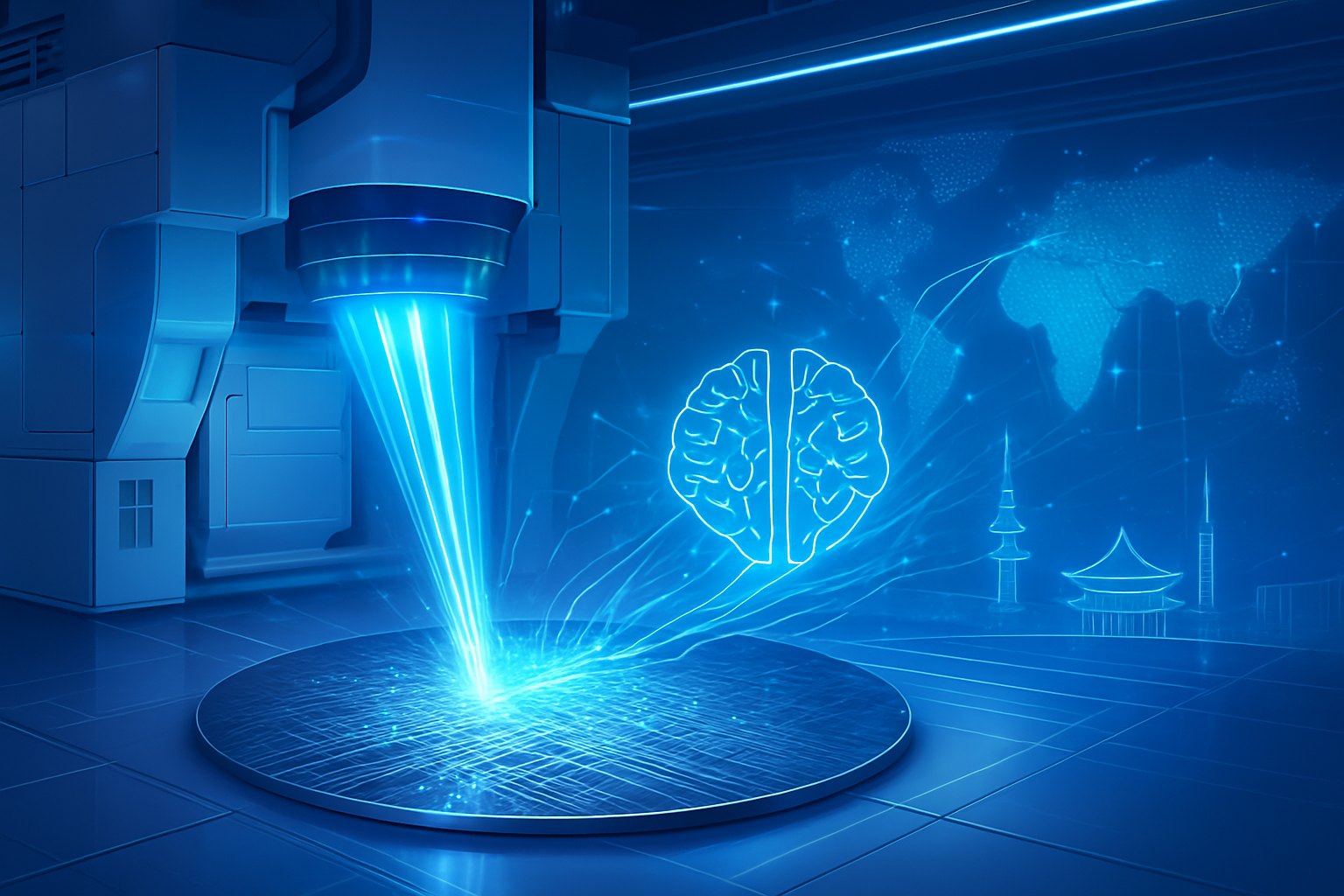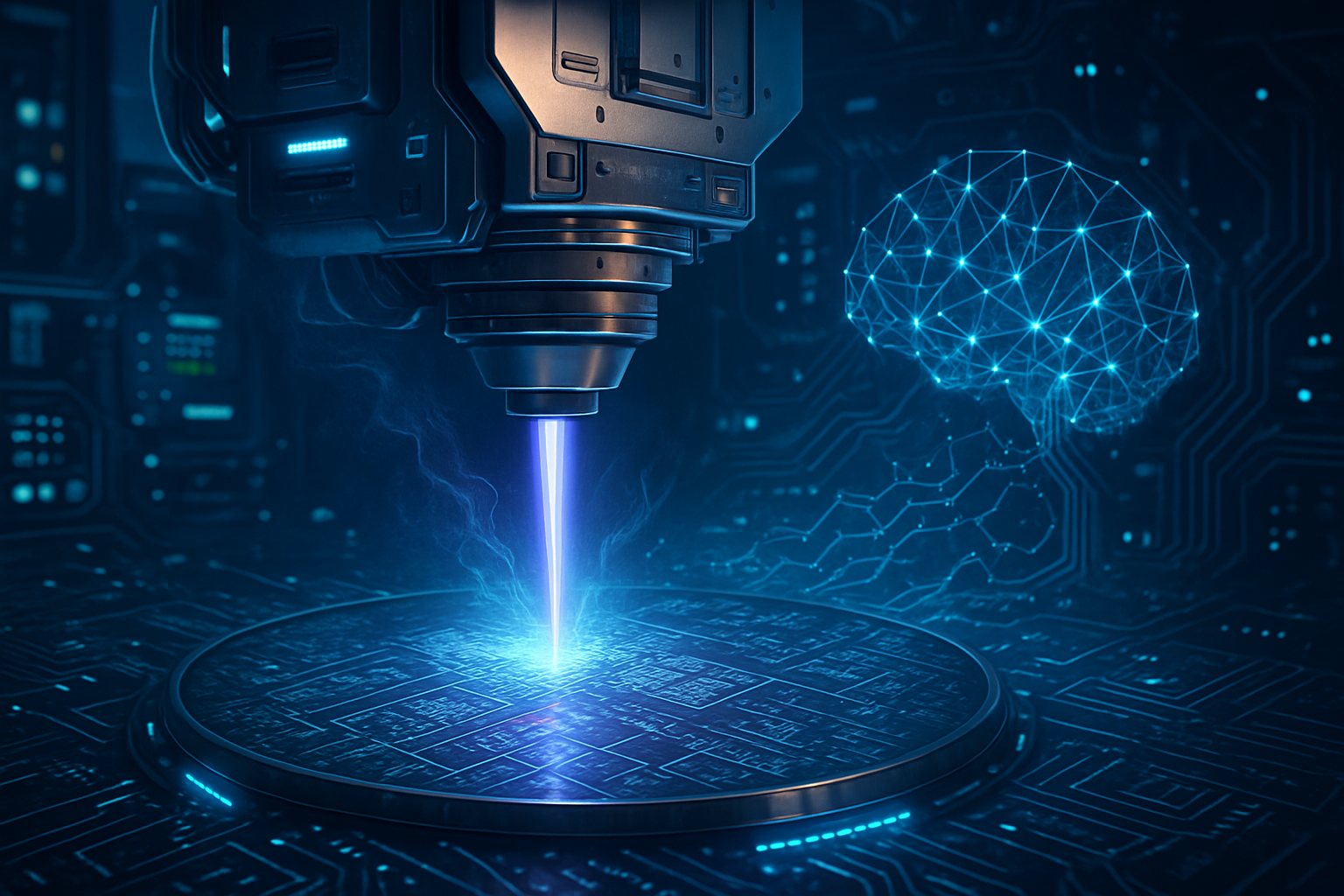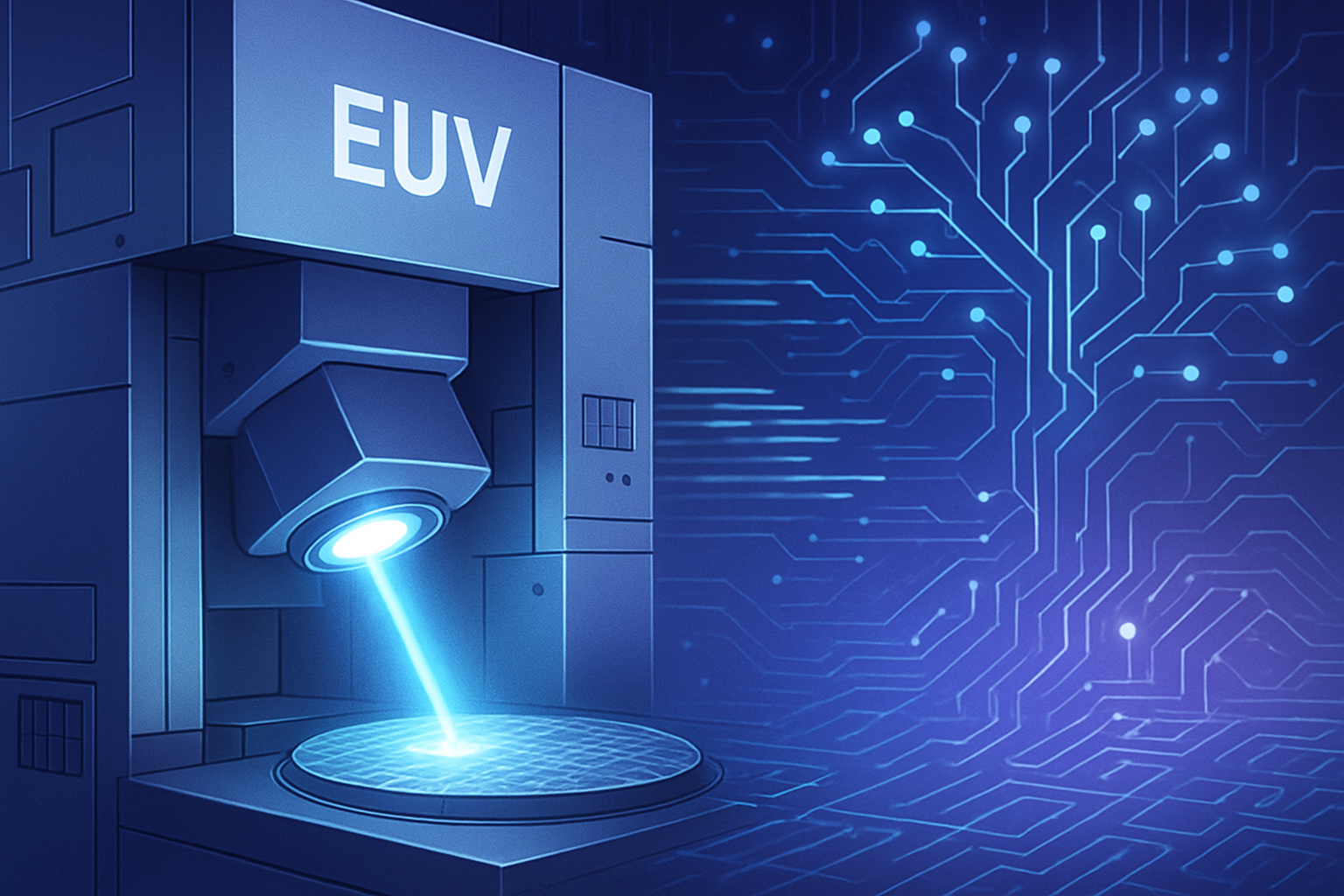Lithography, the intricate process of etching microscopic patterns onto silicon wafers, stands as the foundational cornerstone of modern semiconductor manufacturing. Without this highly specialized technology, the advanced microchips that power everything from our smartphones to sophisticated artificial intelligence systems would simply not exist. At the very heart of this critical industry lies ASML Holding N.V. (NASDAQ: ASML), a Dutch multinational company that has emerged as the undisputed leader and sole provider of the most advanced lithography equipment, making it an indispensable enabler for the entire global semiconductor sector.
ASML's technological prowess, particularly its pioneering work in Extreme Ultraviolet (EUV) lithography, has positioned it as a gatekeeper to the future of computing. Its machines are not merely tools; they are the engines driving Moore's Law, allowing chipmakers to continuously shrink transistors and pack billions of them onto a single chip. This relentless miniaturization fuels the exponential growth in processing power and efficiency, directly underpinning breakthroughs in artificial intelligence, high-performance computing, and a myriad of emerging technologies. As of November 2025, ASML's innovations are more critical than ever, dictating the pace of technological advancement and shaping the competitive landscape for chip manufacturers worldwide.
Precision Engineering: The Technical Marvels of Modern Lithography
The journey of creating a microchip begins with lithography, a process akin to projecting incredibly detailed blueprints onto a silicon wafer. This involves coating the wafer with a light-sensitive material (photoresist), exposing it to a pattern of light through a mask, and then etching the pattern into the wafer. This complex sequence is repeated dozens of times to build the multi-layered structures of an integrated circuit. ASML's dominance stems from its mastery of Deep Ultraviolet (DUV) and, more crucially, Extreme Ultraviolet (EUV) lithography.
EUV lithography represents a monumental leap forward, utilizing light with an incredibly short wavelength of 13.5 nanometers – approximately 14 times shorter than the DUV light used in previous generations. This ultra-short wavelength allows for the creation of features on chips that are mere nanometers in size, pushing the boundaries of what was previously thought possible. ASML is the sole global manufacturer of these highly sophisticated EUV machines, which employ a complex system of mirrors in a vacuum environment to focus and project the EUV light. This differs significantly from older DUV systems that use lenses and longer wavelengths, limiting their ability to resolve the extremely fine features required for today's most advanced chips (7nm, 5nm, 3nm, and upcoming sub-2nm nodes). Initial reactions from the semiconductor research community and industry experts heralded EUV as a necessary, albeit incredibly challenging, breakthrough to continue Moore's Law, overcoming the physical limitations of DUV and multi-patterning techniques.
Further solidifying its leadership, ASML is already pushing the boundaries with its next-generation High Numerical Aperture (High-NA) EUV systems, known as EXE platforms. These machines boast an NA of 0.55, a significant increase from the 0.33 NA of current EUV systems. This higher numerical aperture will enable even smaller transistor features and improved resolution, effectively doubling the density of transistors that can be printed on a chip. While current EUV systems are enabling high-volume manufacturing of 3nm and 2nm chips, High-NA EUV is critical for the development and eventual high-volume production of future sub-2nm nodes, expected to ramp up in 2025-2026. This continuous innovation ensures ASML remains at the forefront, providing the tools necessary for the next wave of chip advancements.
ASML's Indispensable Role: Shaping the Semiconductor Competitive Landscape
ASML's technological supremacy has profound implications for the entire semiconductor ecosystem, directly influencing the competitive dynamics among the world's leading chip manufacturers. Companies that rely on cutting-edge process nodes to produce their chips are, by necessity, ASML's primary customers.
The most significant beneficiaries of ASML's advanced lithography, particularly EUV, are the major foundry operators and integrated device manufacturers (IDMs) such as Taiwan Semiconductor Manufacturing Company (TSMC) (NYSE: TSM), Samsung Electronics Co., Ltd. (KRX: 005930), and Intel Corporation (NASDAQ: INTC). These tech giants are locked in a fierce race to produce the fastest, most power-efficient chips, and access to ASML's EUV machines is a non-negotiable requirement for staying competitive at the leading edge. Without ASML's technology, these companies would be unable to fabricate the advanced processors, memory, and specialized AI accelerators that define modern computing.
This creates a unique market positioning for ASML, effectively making it a strategic partner rather than just a supplier. Its technology enables its customers to differentiate their products, gain market share, and drive innovation. For example, TSMC's ability to produce chips for Apple, Qualcomm, and Nvidia at the most advanced nodes is directly tied to its investment in ASML's EUV fleet. Similarly, Samsung's foundry business and its own memory production heavily rely on ASML. Intel, having lagged in process technology for some years, is now aggressively investing in ASML's latest EUV and High-NA EUV systems to regain its competitive edge and execute its "IDM 2.0" strategy.
The competitive implications are stark: companies with limited or no access to ASML's most advanced equipment risk falling behind in the race for performance and efficiency. This could lead to a significant disruption to existing product roadmaps for those unable to keep pace, potentially impacting their ability to serve high-growth markets like AI, 5G, and autonomous vehicles. ASML's strategic advantage is not just in its hardware but also in its deep relationships with these industry titans, collaboratively pushing the boundaries of what's possible in semiconductor manufacturing.
The Broader Significance: Fueling the Digital Future
ASML's role in lithography transcends mere equipment supply; it is a linchpin in the broader technological landscape, directly influencing global trends and the pace of digital transformation. Its advancements are critical for the continued validity of Moore's Law, which, despite numerous predictions of its demise, continues to be extended thanks to innovations like EUV and High-NA EUV. This sustained ability to miniaturize transistors is the bedrock upon which the entire digital economy is built.
The impacts are far-reaching. The exponential growth in data and the demand for increasingly sophisticated AI models require unprecedented computational power. ASML's technology enables the fabrication of the high-density, low-power chips essential for training large language models, powering advanced machine learning algorithms, and supporting the infrastructure for edge AI. Without these advanced chips, the AI revolution would face significant bottlenecks, slowing progress across industries from healthcare and finance to automotive and entertainment.
However, ASML's critical position also raises potential concerns. Its near-monopoly on advanced EUV technology grants it significant geopolitical leverage. The ability to control access to these machines can become a tool in international trade and technology disputes, as evidenced by export control restrictions on sales to certain regions. This concentration of power in one company, albeit a highly innovative one, underscores the fragility of the global supply chain for critical technologies. Comparisons to previous AI milestones, such as the development of neural networks or the rise of deep learning, often focus on algorithmic breakthroughs. However, ASML's contribution is more fundamental, providing the physical infrastructure that makes these algorithmic advancements computationally feasible and economically viable.
The Horizon of Innovation: What's Next for Lithography
Looking ahead, the trajectory of lithography technology, largely dictated by ASML, promises even more remarkable advancements and will continue to shape the future of computing. The immediate focus is on the widespread adoption and optimization of High-NA EUV technology.
Expected near-term developments include the deployment of ASML's High-NA EUV (EXE:5000 and EXE:5200) systems into research and development facilities, with initial high-volume manufacturing expected around 2025-2026. These systems will enable chipmakers to move beyond 2nm nodes, paving the way for 1.5nm and even 1nm process technologies. Potential applications and use cases on the horizon are vast, ranging from even more powerful and energy-efficient AI accelerators, enabling real-time AI processing at the edge, to advanced quantum computing chips and next-generation memory solutions. These advancements will further shrink device sizes, leading to more compact and powerful electronics across all sectors.
However, significant challenges remain. The cost of developing and operating these cutting-edge lithography systems is astronomical, pushing up the overall cost of chip manufacturing. The complexity of the EUV ecosystem, from the light source to the intricate mirror systems and precise alignment, demands continuous innovation and collaboration across the supply chain. Furthermore, the industry faces the physical limits of silicon and light-based lithography, prompting research into alternative patterning techniques like directed self-assembly or novel materials. Experts predict that while High-NA EUV will extend Moore's Law for another decade, the industry will increasingly explore hybrid approaches combining advanced lithography with 3D stacking and new transistor architectures to continue improving performance and efficiency.
A Pillar of Progress: ASML's Enduring Legacy
In summary, lithography technology, with ASML at its vanguard, is not merely a component of semiconductor manufacturing; it is the very engine driving the digital age. ASML's unparalleled leadership in both DUV and, critically, EUV lithography has made it an indispensable partner for the world's leading chipmakers, enabling the continuous miniaturization of transistors that underpin Moore's Law and fuels the relentless pace of technological progress.
This development's significance in AI history cannot be overstated. While AI research focuses on algorithms and models, ASML provides the fundamental hardware infrastructure that makes advanced AI feasible. Its technology directly enables the high-performance, energy-efficient chips required for training and deploying complex AI systems, from large language models to autonomous driving. Without ASML's innovations, the current AI revolution would be severely constrained, highlighting its profound and often unsung impact.
Looking ahead, the ongoing rollout of High-NA EUV technology and ASML's continued research into future patterning solutions will be crucial to watch in the coming weeks and months. The semiconductor industry's ability to meet the ever-growing demand for more powerful and efficient chips—a demand largely driven by AI—rests squarely on the shoulders of companies like ASML. Its innovations will continue to shape not just the tech industry, but the very fabric of our digitally connected world for decades to come.
This content is intended for informational purposes only and represents analysis of current AI developments.
TokenRing AI delivers enterprise-grade solutions for multi-agent AI workflow orchestration, AI-powered development tools, and seamless remote collaboration platforms.
For more information, visit https://www.tokenring.ai/.








